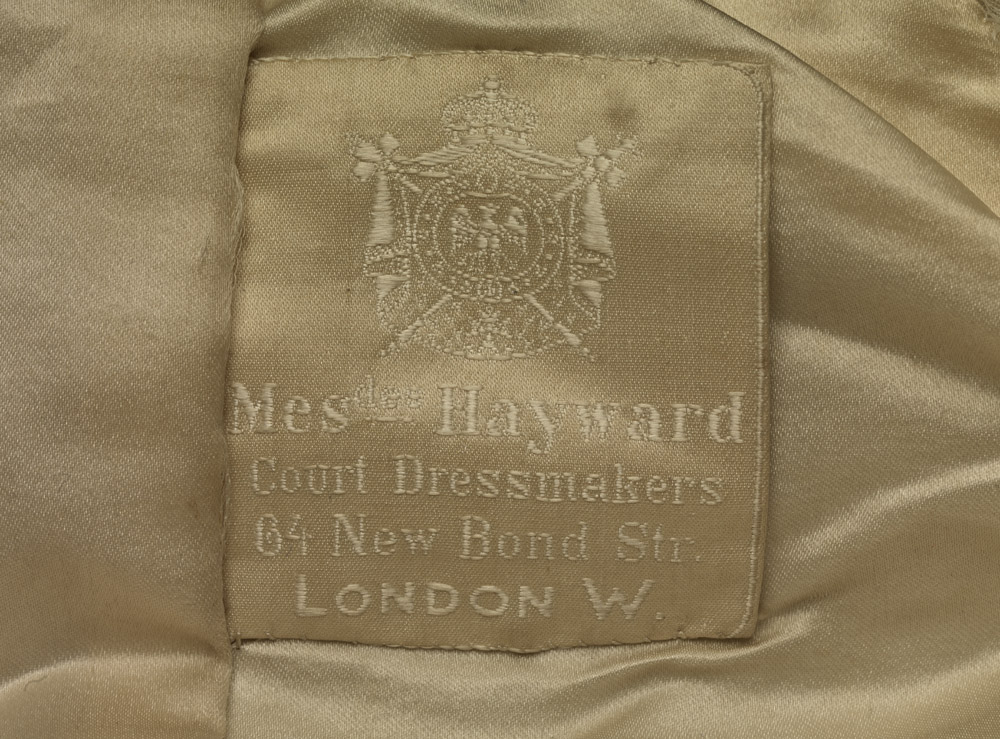Details
- Name
Hayward
- Brief Biography
by 1885 - 1956, British / English
- Occupation
corset maker, court dressmaker
- Description
-
Madame Hayward was a maker of items in Glasgow Museums' dress collection. The business was established initially as a corset maker by Augusta Mary Hayward (1862-1946), possibly with her husband, Victor Silberberg (d.1923), a Hungarian émigré, at 37 Old Bond Street, London, by 1885. By 1890 the business had moved to the basement of 64 New Bond Street. Although it continued to be listed in the London directories as just corset makers until the early 1900s, the business expanded into millinery before becoming 'Court Dressmakers and Ladies' General Outfitters', with Augusta working in partnership with Ellen Eliza Foulston until 28 Feburary 1897. By 1899 the Silberbergs had taken over 67 and 68 New Bond Street by 1899. The business prided itself on its quality, advertising 'exquisite Paris Models of every description' in The Morning Post, 9 May 1894, or for a 'French Fitter' with the 'very best Paris or West-end experience' in The Daily Telegraph, 10 April 1899. By 1905 the business started to be listed as a 'court dressmaker, ladies' tailor, furrier, milliner, corsetiere & ladies outfitter'.
As well as providing garments for society ladies, the business also made a name for itself from 1898 onwards providing the costumes for leading actresses and singers in London's West End and New York. In 1904 Madame Hayward dressed Ellen Terry in Lady Windermere's Fan. The following year George Bernard Shaw, who was trying to persuade Lillah McCarthy to act in The Doctor’s Dilemma wrote to J E Vendrenne in 17 October 1906 'Madame Hayward wants £170 for the dresses. Possibly this means only £150; but the difference is of no account. […] I am deliberately spoiling Lillah to get the best out of her for this play; for it will depend on her getting as much enchantment into it as possible. […] The exasperating thing about these first rate people is that they charge ten guineas for ten shillings of extra quality; but the extra is there & Lillah knows it. She must not feel cheap, whatever it costs – I mean, you will say, whatever it costs you – but you know I don’t throw money about as recklessly as you do yourself. This will not be wasted.'
Madame Hayward flourished over the next couple of decades with her ensembles featuring in Vogue and shown in the Franco British Exhibition at White City, London, in 1908. The designer made the wedding dress for Regina de Bittencourt's marriage to Ernest Vaughan, 7th Earl of Lisburne on 15 July 1914 and a dress for Princess Mary's trousseau that was described as 'an exquisite robe of old point de Flandre lace, of a rich, deep cream colour, worn over a crepe-de-chine slip of the same shade' in the The Scotsman, 8 February 1922. Augusta continued the business after Victor's death in 1923. A petition to wind up what was then Madame Hayward Ltd was submitted by a creditor, Mary Marsh Brown, to the High Court of Justice on the 8 September 1941. However, Madame Hayward Ltd was not dissolved until 1956.
